Colleagues:
We are pleased to share with you valuable insight into Iranian thinking with respect to the latest crisis in that region, written by an Army and Air Force Special Operations Colonel (Ret), Mike Haas, with considerable expertise in the region and regarding Spec Ops/Intelligence. COL Haas, formerly lived in the Reno area but is now on the East Coast.
Intelligence Profile: Part 1
This Admiral Has a Mission
– by Col. Michael Haas, USAF, ret.
Fortunate indeed is the commander given ten years to shape the Battlespace in which he will fight. All the more so against a long-identified foe, employing familiar weapons and tactics. Well before combat commences, for example, such lengthy lead time allows for the funding and fielding of weapons developed for the singular purpose of exploiting this one enemy’s known vulnerabilities. Should this fortunate commander happen to be shrewd, intelligent, ideologically committed, and possess a visceral animosity towards the U.S., he might publicly say things such as . . .
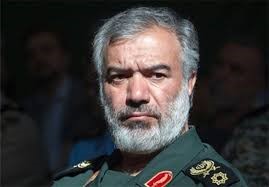
“. . . the Americans and the rest of the world know that one of the IRGC navy’s operational goals is to destroy the U.S. Navy. We are doing it for one clear purpose, the result of which will be the defeat and humiliation of the Americans.”
Rear Admiral Ali Fadavi, Commander
Iranian Revolutionary Guards Corps-Navy
Posturing? Almost certainly. Bluffing? Almost certainly not, at least not if intent is the measure of his words. According to the U.S. Office of Naval Intelligence, this 57-year old Admiral has dedicated his life to service in Iran’s Revolutionary Guards Corp (IRGC), including its extraterritorial, Special Operations directorate-the Quds Force. With a graduate degree in Strategic Management and a series of key Intelligences postings within the IRGC—notably during the 1980-1988 long Iran-Iraq War—the man presents as a formidable talent & intense adherent to the goals of the 1979 Iranian Revolution.
By all public accounts his ideological fervor and leadership skills have only flourished since his appointment as Commander, IRGC Navy (IRGCN), in May, 2010. To its intense dismay, the U.S. Navy inadvertently enhanced his reputation, when on January 12, 2016, two U.S. Navy riverine command boats strayed into Iranian territorial waters, only to be promptly seized by the IRGCN.
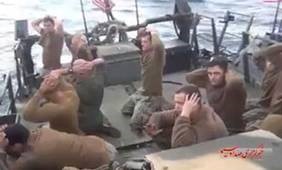 It was simply too good an opportunity for Iran not to make maximum propaganda value from the affair; thus, of course, it didn’t. By the standards measuring success in Psychological Operations, the stunning photos that followed—‘Great Satan’ American sailors on knees, in total submission—were a once-in-a-career achievement. All the more impressive throughout the Middle East, in which relatively-low literacy rates only enhance the power of images.
It was simply too good an opportunity for Iran not to make maximum propaganda value from the affair; thus, of course, it didn’t. By the standards measuring success in Psychological Operations, the stunning photos that followed—‘Great Satan’ American sailors on knees, in total submission—were a once-in-a-career achievement. All the more impressive throughout the Middle East, in which relatively-low literacy rates only enhance the power of images.
Admiral Fadavi played the moment like a Stradivarius violin, unquestionably leaving behind an intended effect that still reverberates in the Persian Gulf to this day. Iran’s supreme leader subsequently awarded the Order of Fat’h (“medals of conquest”) to five IRGC officers, including the certainly well-deserving Admiral Fadavi.
Six years earlier the U.S. Navy began publicly referring to the Persian Gulf as the ‘Arabian Gulf,’ a policy it maintains to this day. At the time the Iranians responded—predictably and, as they do now—with great indignation to the obviously intended affront. At one level this policy may be dismissed as simply one more Battlespace in the propaganda war fueling U.S.-Iranian tensions.
On another, personal level, it may well fuel the rage of men like Admiral Ali Fadavi, who await with relish their next chance to humiliate America.
[Part II will include specific commentary on the IRGCN’s mission, weaponry, and organization].
Intelligence Profile: Part 2
Strait Talk
– by Col. Michael Haas, USAF, ret.
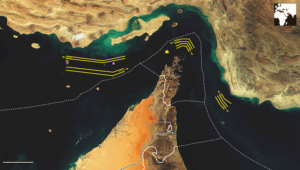 Every day of the year some 20% of the world’s oil needs sail through a maritime funnel approximating the distance between the Pentagon and the U.S. Naval Academy in Annapolis, MD. This narrow funnel is effectively reduced still further to a six-mile wide band in its center; two shipping lanes—one inbound, one outbound—each two nautical miles wide and in turn separated by a ‘median’ itself two nautical miles wide. Thus the Strait of Hormuz defines the term ‘choke point’ in every relevant, political-military-economic connotation.
Every day of the year some 20% of the world’s oil needs sail through a maritime funnel approximating the distance between the Pentagon and the U.S. Naval Academy in Annapolis, MD. This narrow funnel is effectively reduced still further to a six-mile wide band in its center; two shipping lanes—one inbound, one outbound—each two nautical miles wide and in turn separated by a ‘median’ itself two nautical miles wide. Thus the Strait of Hormuz defines the term ‘choke point’ in every relevant, political-military-economic connotation.
Which, of course, makes it so incredibly tempting to take the Iranian bait when their Mullahs threaten to ‘choke off the choke point’ should current political tensions erupt into open hostilities with the U.S. Evident to virtually every geo-political observer are the multitude of factors that make control of the Strait of Hormuz a political bargaining chip of the first magnitude. Which of course also makes it so incredibly tempting to forget the whole point of the bait . . . the trap.
______________________________________________________________________________________
This author’s assertion: Contrary to their public threats to do so, Iranians will not attempt closing the critical Strait in the event of war with the U.S. Nor will they attempt sinking a significant number of oil tankers. Neither strategy serves their real goal.
_______________________________________________________________________________________
The most obvious reason for not attempting to choke off the Strait, is that in doing so the Iranians would prevent the export of their own oil, aka the one export that brings in desperately needed foreign currency. A second, and perhaps counter-intuitive reason, is that the giant oil tankers are considerably more difficult to sink than we landlubbers would have guessed.
Both Iran and Iraq attacked Persian Gulf shipping during the 1980-1988 Iran-Iraq War. And the results are revealing, as gleaned from a report by the Robert Strauss Center for International Security and Law (U. Texas-Austin): Of 411 ships attacked [anti-ship missiles employed in more than half these attacks], 259 were oil tankers and of this subset, less than 25% were sunk or damaged beyond economic repair. They may be slow, squat, ungainly, with a face only a sailor could love, but much of the current tanker fleet is even better designed to withstand damage e.g., much-improved compartmentalization, inert gas in the storage tanks to prevent explosion, etc.
Beyond these financial and practical considerations the all-important media war will be contested (as in fact it already is today). Is Iran really willing to be held accountable on the world stage for the economic havoc that will inevitably follow its violent closure of the Strait? Not bloody likely! In this regard one can only trust our National Command Authority and regional Combatant Commanders will have their Information Operations (Psychological Warfare) plan massaged and ready to roll out. Because the Iranians will certainly not be slow in the finger-pointing game.
So if the Iranian threat to choke off the Strait is a red herring—a Deception plan—and oil tankers themselves are not the primary target, what then is the Persian maritime strategy for combatting ‘The Great Satan?’

“. . . the Americans and the rest of the world know that one of the IRGC navy’s operational goals is to destroy the U.S. Navy. We are doing it for one clear purpose, the result of which will be the defeat and humiliation of the Americans.” As per our discussion of the IRGC Navy commander in Part 1 of this series, it’s not as if Rear Admiral Ali Fadavi hasn’t left a trail of bread-crumbs
In the eyes of the Mullahs and their IRGC Navy commander, ‘winning’ is not about the sinking of tankers nor the closure of the Strait. As the Japanese hoped to do at Pearl Harbor, as the North Vietnamese attempted to do in the Tet Offensive, RADM Fadavi’s strategy calls for inflicting maximum casualties on an America known to be extremely sensitive to such losses. How to accomplish this?
Use the tankers as bait to pull the U.S. Navy into the Gulf in the tanker-escort role; a repeat of what it did in the Iran-Iraq War. This time however and against a much-improved IRGC Navy—one extensively trained and equipped for asymmetric warfare against one foe, in one spot—the engagement will indeed become ‘the knife fight in the telephone booth.’ This is the moment RADM Fadavi has been preparing for the last ten years of his life.
From the Iranian perspective this may well be the critical chink in the armor of the American war machine, of America’s political will to persevere. This is what ‘defeat and humiliation’ is all about, the ‘winning’ that could—just conceivably—lead America to effectively withdraw from the Persian Gulf.
Iran’s IRGC: Part 3
– by Col. Michael Haas, (USAF, ret)
Who are those guys?! memorable line, ‘Butch Cassidy and the Sundance Kid’
Great question for those two rogues, and one no less relevant today as one takes a deeper look at Iran’s Revolutionary Guard Corps. The Communists had their NKVD, the Nazis the SS, and Japan the feared Kenpeitai; all Praetorian Guards to protect the elite from what their countrymen would never willingly accept. From such an ideological stable comes the Iran Revolutionary Guard Corps (IRGC), a multi-tentacled organization of immense power and international reach; both functions ruthlessly dedicated to preserving the revolutionary regime of Supreme Leader, Ali Khamenei.
 ‘Preserving’ should not be taken literally in the defensive sense. The IRGC’s offensive activities—for which the U.S. censured Iran as a ‘state sponsor of terrorism’ in 1984—have expanded dramatically in the subsequent thirty-four years. And though downplayed by an Obama Administration anxious to negotiate with Iran’s mullahs, the fact remains no Democrat or Republican administration has lifted this rare political opprobrium on the Persians.
‘Preserving’ should not be taken literally in the defensive sense. The IRGC’s offensive activities—for which the U.S. censured Iran as a ‘state sponsor of terrorism’ in 1984—have expanded dramatically in the subsequent thirty-four years. And though downplayed by an Obama Administration anxious to negotiate with Iran’s mullahs, the fact remains no Democrat or Republican administration has lifted this rare political opprobrium on the Persians.
To put the IRGC’s pervasive role in perspective, it’s instructive to review its widespread roots in virtually all aspects of Iranian domestic affairs. Ray Takeyh of the Council on Foreign Relations described in 2007 an IRGC “heavily involved in everything from pharmaceuticals to telecommunications and pipelines – even the new Imam Khomeini Airport and a great deal of smuggling. They’re developing along the lines of the Chinese military, which is involved in many business enterprises. It’s a huge business conglomeration.”
Five years later in a report to congress, the U.S. Treasury Department affirmed ‘The IRGC is Iran’s most powerful economic actor, 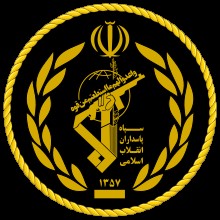 dominating many sectors of the economy, including energy, construction, and banking.’ And in May of this year the Treasury Department imposed sanctions on Iran’s Central Bank Governor, Valiollah Seif, for covertly moving millions of dollars on behalf of the IRGC’s Quds Force to the Lebanon-based Hezbollah. And in another report this year, this from the international, non-profit Counter Extremism Project: ‘The IRGC received a reported 55 percent increase in Iran’s proposed 2017-18 fiscal budget, up from $4.5 billion to $7 billion.’
dominating many sectors of the economy, including energy, construction, and banking.’ And in May of this year the Treasury Department imposed sanctions on Iran’s Central Bank Governor, Valiollah Seif, for covertly moving millions of dollars on behalf of the IRGC’s Quds Force to the Lebanon-based Hezbollah. And in another report this year, this from the international, non-profit Counter Extremism Project: ‘The IRGC received a reported 55 percent increase in Iran’s proposed 2017-18 fiscal budget, up from $4.5 billion to $7 billion.’
All of which begs the obvious question ‘What is all this money funding?’
Cliff Notes answer: These billions of dollars are funding the IRGC as the revolution’s primary military force. This is an important distinction, as it puts Iran’s conventional military forces in the collaborative if not supporting role in key functional and geographic areas, e.g., strategic missiles forces, the Persian Gulf.
The IRGC’s leading role is underscored by the fact it—not Iran’s military—is entrusted with Iran’s strategic missile forces; not to mention a plethora of short-to-long-range surface-to-surface and surface-to-air rockets/missiles. So too this money funds the IRGC’s expansive Electronic Warfare and Cyber Defense Organization; a force malignant enough in its own right to warrant Treasury Department sanctions for ‘serious human rights abuses and censorship in Iran, and support to designated Iranian weapons proliferators.’
And of particular note this money funds the IRGC’s special creation: The Quds Force.
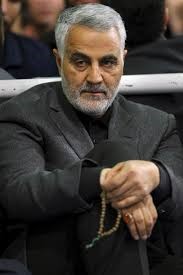 The Quds (‘Jerusalem’) Force is accurately if too-modestly described as the IRGC unit responsible for Iran’s extraterritorial operations. Its commander, 61 year-old Major General Qasem Soleimani, reports directly to and is accountable only to the Supreme Leader, Ali Khamenei. While its actual strength remains classified, force strength is open-source estimated at some 15,000 operational and direct-support personnel. The U.S. designated the Quds Force (QF) a supporter of terrorism in 2007.
The Quds (‘Jerusalem’) Force is accurately if too-modestly described as the IRGC unit responsible for Iran’s extraterritorial operations. Its commander, 61 year-old Major General Qasem Soleimani, reports directly to and is accountable only to the Supreme Leader, Ali Khamenei. While its actual strength remains classified, force strength is open-source estimated at some 15,000 operational and direct-support personnel. The U.S. designated the Quds Force (QF) a supporter of terrorism in 2007.
Such busy fellows they are! The Small Wars Journal also describes their massive financial and materiel support to Hezbollah on a global basis (including South America; Venezuela notably), while QF operatives are known to be active in Iraq, Syria, the Persian Gulf states, Gaza/West Bank, Afghanistan, Yemen, and Central Asia. For operations still further abroad, the QF employs Unit 400 against targets in the Western Hemisphere.
As in for example, its 2011 plot to assassinate in Washington D.C., the Saudi Ambassador to the United States. Informed sources[i] report the ‘Arbabsiar Plot’ was directed by none other than Quds Force senior officer, Abdul Reza Shahlai. The very same officer alleged to have played “a central role in the Quds Force’s covert operations against and targeting of U.S. forces in Iraq since the 2003 invasion . . . in 2007 oversaw the kidnapping and assassination of five American service members from a U.S. base in Karbala, Iraq.”
By all accounts the Quds Force is considered a world-class special operations force, at least in terms of effectiveness and ruthlessness. Well-funded, trained, and equipped, it gets its pick of ideologically-motivated recruits. Which of course also describes the IRGC itself. Which in turn is a reflection of—the reflection of—the revolution publicly committed to the extermination of Israel, the ‘defeat and humiliation’ of ‘Great Satan’ America, and the sworn blood enemy of Sunni Islam since the passing of the Prophet Muhammed in 632 AD.
Oh yes . . . pause . . . deep breath. Plan A, anybody?
Helpful that Plan A has already begun, thanks to the U.S. Treasury Department’s little-heralded Office of Intelligence and Analysis. True Believers or not, the IRGC’s fondness for loot is difficult to hide in the dollar-dominant international monetary system. And the Trump Administration’s targeted sanctions against known Quds Force officials are sending the unmistakable message the easy salad days of U.S. ‘strategic patience’ are over.
Which still leaves in play, The Great Question: How will Iran’s revolutionary mullahs respond to the new U.S. resolve and the increasingly bitter bite of sanctions? They badly need an external enemy to blame for their mismanagement of the economy, and the ‘Great Satan’ America theme has long been imprinted on the Iranian public. To their great credit however the restive Persians appear to see through the mullah’s canard, thus leaving the ruling elite in a ‘double or nothing’ dilemma. Should it come to open conflict, the U.S. certainly has cards to play.
The most obvious of which (see: Part 2, Intelligence Profiles) is to maintain stand-off distance while pummeling both the IRGC’s tactical and strategic forces. As this author has personally witnessed the U.S. Intelligence community has truly impressive credentials when it comes to identifying the enemy’s physical and electronic Order of Battle.
Your author ceases as this point, having just violated the cardinal rule, ‘Never ask an Intelligence Officer for an Operational solution.’ Mea Culpa!
[i] Scott Modell and David Asher, “Pushback: Countering the Iran Action Network.” Center for a New American Security. 5 September 2013.
_____________________________________________________________________________
Author: Col. Haas lived in Iran for two years while flying as a commercial pilot providing support to the National Iranian Oil Company’s platforms in the Persian Gulf. He is a graduate of the Naval Postgraduate School’s National Security Affairs program, and published author of numerous books and magazine articles on political-military affairs. His Army-Air Force career includes tours in light-infantry and aircrew Special Operations, Psychological Operations, the Air Staff, and the Defense Intelligence Agency.

